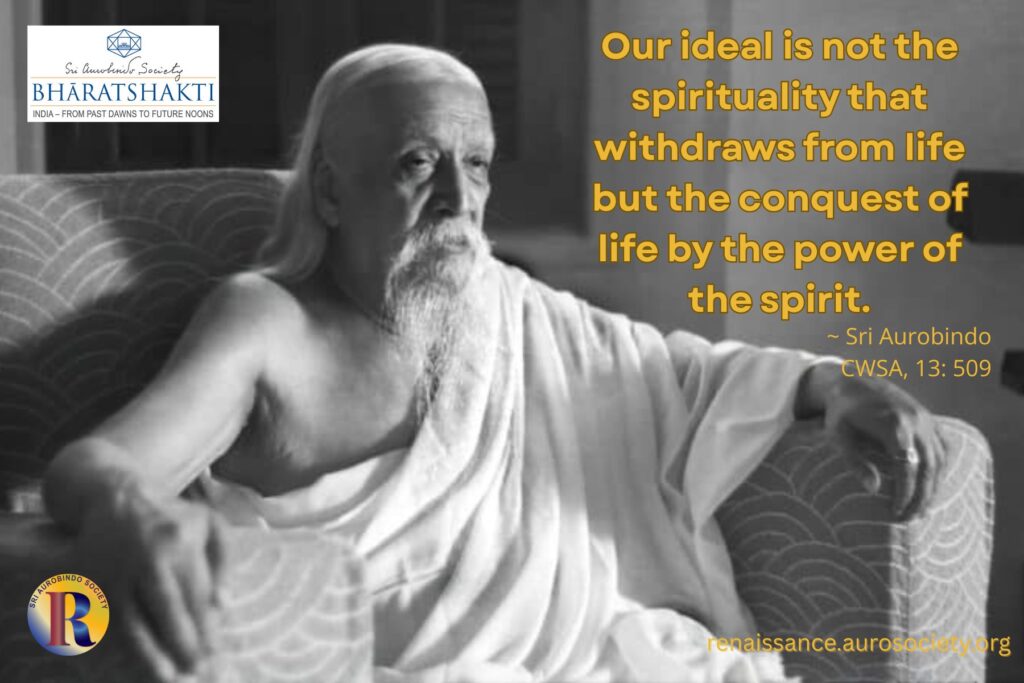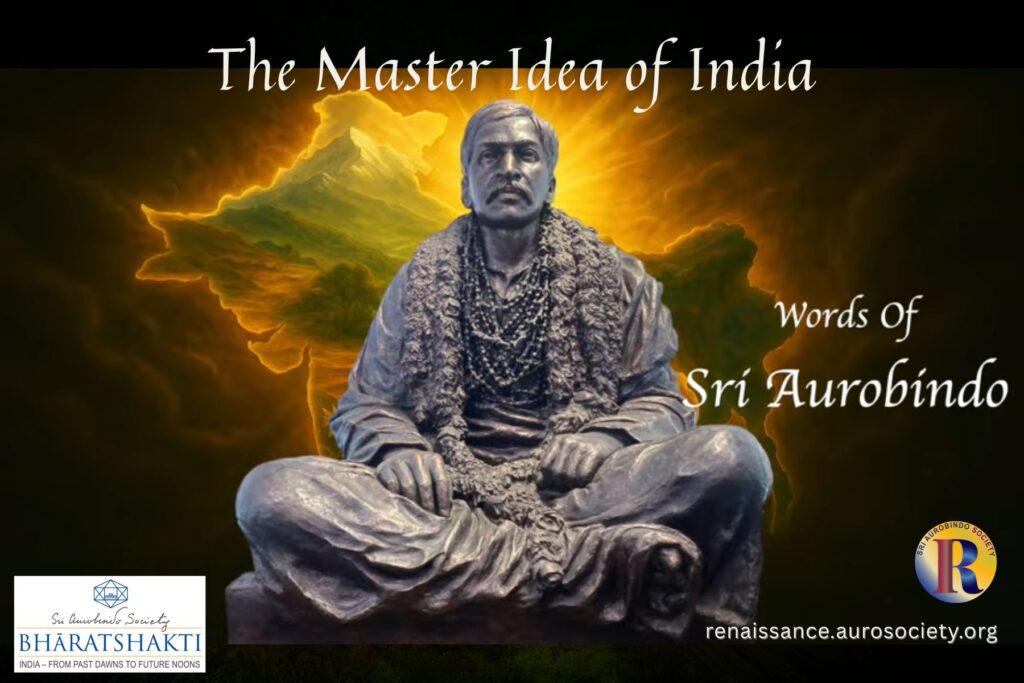Volume 1, Issue 8
Author: Beloo Mehra
Given the theme of this month’s issue – Shakti, the Divine Mother, we feature a book titled ‘About Woman’ which is a short collection of essays written by Nolini Kanta Gupta. This slim volume of 95 pages is an English translation by Satadal of Bengali essays by the author originally compiled under the title ‘Nārir Katha’. The English translation published in 1999 by Sri Aurobindo Center for Advanced Research (SACAR), Pondicherry, opens with the following preface:
“There is hardly any subject that is outside the purview of a yogi—from the sublime to the mundane, from the mystic to the obvious, all are within the ken of his assessment. At least, that was the case with Nolini Kanta Gupta.
“His yogic insight surveys the world from a spiritual angle— an angle that is characterised by a comprehending and integral vision of things. It is only such a unified vision that can study in a proper perspective the complex problems of existence, be they on the level of the society, the nation or the world.
“One such problem that Nolini Kanta Gupta took up, between 1932 and 1949, was that of woman, especially in the backdrop of Indian culture and social values. At the time when these articles on women were being written, not even the Western countries had taken up the problem of women very seriously, busy that they were with the aftermath of World War II. But a yogi sees things and events that are on the horizon of the future, and as he sees so he foretells. That is what Nolini Kanta Gupta did—to put seed-thoughts in the earth’s atmosphere. Today’s seed-thoughts of a yogi are the seed-truths of tomorrow.” (Ananda Reddy)
It requires a wide, all-encompassing and deep vision of a yogi to see the interconnections among the cultural, the historical, the psychological and the spiritual aspects of what many may think of as a merely sociological problem, often brushed under the commonly used word ‘patriarchy.’ To appreciate such an interconnected view of things is of immense importance if one has to widen and deepen one’s understanding of the Indian women’s experiences and issues in a culturally sensitive way.
Since the original essays of Nolini Kanta Gupta were written between 1932 and 1949, much has changed in the outer context in which women of today’s India are living and experiencing the world. This is especially true when we consider that all across the world there have been variants of ‘women’s movement’ and ‘feminism’, owing to which equality and freedom for women are now generally recognised as two of the most important values to which any modern or modernising society aspires.
For this ‘look at the book,’ I highlight a few selected insights from the book that help me explore the theme of Freedom and Education for Girls and Women. Given my preference for an in-depth reflection rather than doing a cursory reading of the book, I am selecting not to go into several other themes that the book covers, such as the ideal of man-woman relation, conjugal love, attitude of an ascetic toward women, and many more. I have kept the focus rather limited in order to go deeper into understanding the author’s essential points and at the same time interpret them in the context of contemporary realities.
However, even this small selection highlighted here, I hope, will give the readers a peek into the deeper insights of a yogi on a very modern issue (or may be the ‘issue’ always existed and was addressed or explored in various ways across the climes and times). I highly recommend a close, honest reading and reflection of the book for further study of how the “seed-thoughts of a yogi are the seed-truths of tomorrow.”
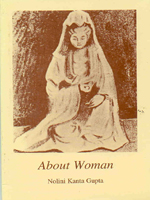
Title: About Woman
Author: Nolini Kanta Gupta
(English Translation by Saladal from the Bengali ‘Narir Katha’)
Publisher: Sri Aurobindo Centre for Advanced Research, Pondicherry
First edition 1999, Second impression 2002, 95 pages
THE WIDER AND FREER OUTLOOK
“The very day the soul of India became small and vigourless, the women of India were the first to be disgraced.” (Nolini Kanta Gupta, p.12).
In this one sentence, quoted above, we have both the problem and the solution summarised eloquently. The problem – the disgracing of the woman; the solution – the soul of the country must become wide and vibrant. We see here a higher and deeper vision at work. The problems faced by women in our country will not be solved unless we as a country, as a society, become wider and freer in our outlook, unless we deepen our individual and collective view of life, progress and harmony.
But a country is not a mere piece of land, a society is not a bunch of institutions. It is the living, breathing, thinking masses of individuals – with their individual physical, vital-emotional and mental lives – which make the society and the nation. The national life, the societal life is a complex mix of these individual lives, but is also something more.
That ‘something more’ is determined by what we generally speak of as a culture’s unique set of life-values which are rooted in not only its noblest ideals and beliefs, its highest vision of life and existence, but also its history of lived experience and the various outer forms and rhythms in which it has successfully or somewhat successfully tried to manifest its ideals and its highest vision.
A sincere study of Indian women’s realities and exploration of how they can grow to their full potential with full individual dignity and freedom, and in harmony with their larger societal and cultural context, necessitates that we go deeper into understanding the philosophical basis of that context.
MAN AND WOMAN – DIFFERENT AND EQUAL
“The idol of Hari-Hara no doubt reveals one of the mysteries of the world; but a greater truth, a deeper mystery is revealed in the idol of Hara-Gauri or Radha-Krishna.” (Nolini Kanta Gupta, p. 5)

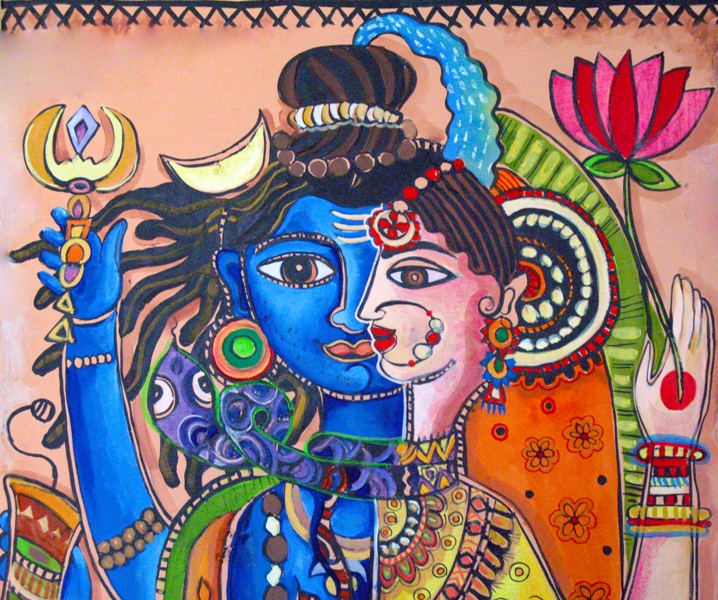
The author here is essentially reminding us of a fundamental truth that the Entity which we generally speak of as Divine, Higher Power, or by any other name, while being Transcendent of all Forms in its Universal Form perfectly harmonises within the duality of both the man and the woman, of Hara and Gauri, of Shiva and Parvati, of Radha and Krishna, of Rama and Sita, of Vishnu and Lakshmi. As Gupta writes – “man and woman – purusha and prakriti – are the only duality, there is no other.” (pp. 4-5).
This is a significant truth revealed to us by our ancient seers and sages, reiterated by Nolini Kanta Gupta in the light of his yogic vision. Equally significant is another truth that is its most natural implication, which the author states thus –
“If any relation exists at all between two different things which seek each other as separate entities for a greater harmony and more perfect realisation – such an interchange between two things is possible only between man and woman. In reality they don’t seem to be two different things but the two halves of one and the same thing – ardhabrgalamiva – as the Upanishad puts it” (p. 5).
“He [the Cosmic Purusha, the Virāj] was not at all happy. Therefore people (still) are not happy when alone. He desired a mate. He became as big as man and wife embracing each other. He parted this very body into two. From that came husband and wife. Therefore, said Yājñavalkya, this (body) is one-half of oneself, like one of the two halves of a split pea. Therefore, this space is indeed filled by the wife. He was united with her. From that men were born.” (Brihadaranyaka Upanishad, 1.4.3 Translation by Swami Madhavananda)
Here are some basic truths that we learn from the above:
1. Man and woman which seem as two distinct entities in Nature, in this relative world, are essentially the manifestation of the same One, two halves of one body, and therefore, in essence one and the same.
2. It is only in the Relative Existence and for the purpose of creation, that they exist as two separate entities, representing the duality of the Purusha, the Being, and Prakriti, the Nature. The essential Oneness of the Supreme Being of which the two are manifestations remains One in its essence, thus indicating that each of the two entities are complete and whole in themselves, one in essence with the Supreme Oneness.
3. This implies that man and woman, though complete in themselves, seek a larger fullness and greater harmony when they come together, not to complete each other but to experience the Oneness and Harmony that is essentially part of their separate beings and yet seeks a greater field for its play and expression.
EQUAL OPPORTUNITIES, INDIVIDUALISED GROWTH
These insights have some important implications for how we, with our modern minds – fed on the messages being constantly drilled in us by mass education, mass media, pop-psychology and pop-sociology – understand the discourse surrounding women, their place in the society and many of the issues they face. Let us take the issue of equal educational opportunities.
First of all, we recognise that while essentially being the same and equal, men and women are different halves, different aspects of the Nature’s own creative processes. The difference inherent in each of these two equal halves results in differences or uniquenesses – of nature, purpose, temperament, qualities, aspects that we generally label as masculine or feminine – which must be given due opportunities for their full development.
Secondly, because both man and woman are essentially the manifestations of the same Oneness, these qualities or aspects which are termed as masculine or feminine (since they too are a manifestation of the same Oneness in its multiplicity) are also present in both, though in varying proportions and potentialities.
This is what gives each individual manifestation – an individual man or woman – a uniqueness and identity of his or her own. An ideal human development would facilitate the blossoming and growth of these qualities and aspects, regardless of one’s biological gender.
This point has important implications for providing equal educational opportunities for both men and women, boys and girls. And equally important are its implications for recognising that these equal opportunities should in no way hamper or interrupt the natural blossoming of an individual’s unique qualities which may be either more masculine or feminine in nature.
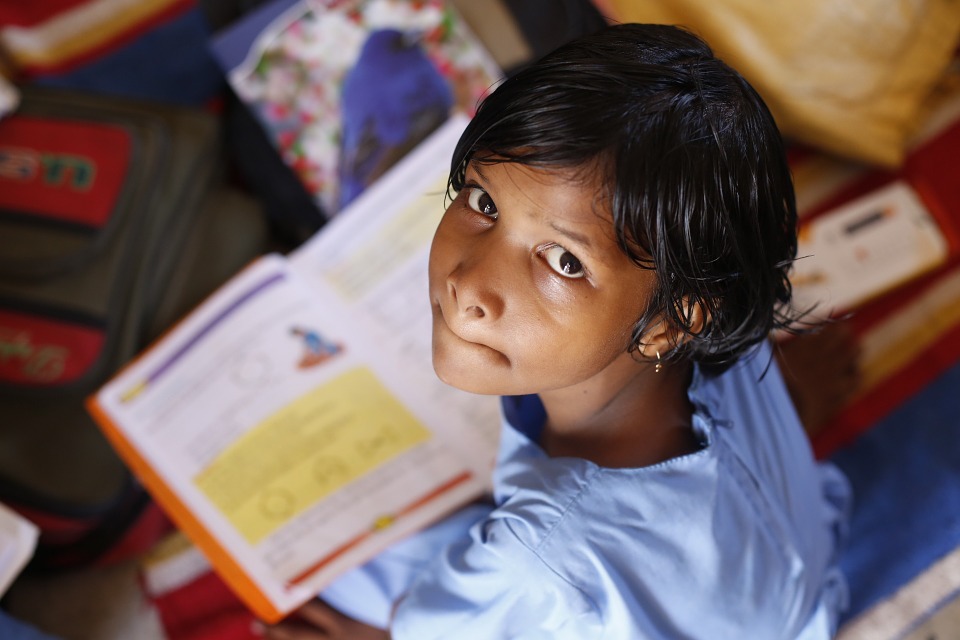
Let us take an example.
The usual biased or stereotypical tendency to inculcate what are typically understood as ‘masculine’ aggressive tendencies in young boys who may have a more ‘feminine’ sensitive temperament needs to be thrown out if the aim is to facilitate an individual’s natural blossoming.
Similarly, girls or women who show greater tendency to participate in aggressive sports should not be discouraged simply because they are girls and these are more ‘masculine’ sports! Both girls and boys need equal opportunities to develop what is latent in them, and these opportunities should be in tune with their inner temperament and aptitudes.
Another important implication has to do with the integral and harmonious development of each individual. This requires that each individual, regardless of the gender, must be given opportunities for development of all parts of his or her being – physical, vital-emotional, mental, and spiritual. There is no reason why girls and young women should not be given appropriate physical education in schools and colleges to help build physical strength and stamina.
Similarly, there is no reason why boys and young men should not be given appropriate education in arts and aesthetics as part of their vital training to help develop a sensitivity to beauty and harmony and to refine and purify one’s character. Both men and women need well thought out mental education to develop as rational beings and grow in their faculty of reasoning, analysis, critical thinking and expression.
And finally, all individuals must be given full opportunity to grow in spirit and seek their inner truth and purpose in life. This is what is truly meant by equal educational opportunity for all.
FREEDOM – WHAT IS IT GOOD FOR?
“The inner story of the revolt of woman…is the effort of the soul of woman towards freedom.” (Nolini Kanta Gupta, p. 27)
Seen from a deeper Indian view of who or what a human being, an individual is, there is essentially no difference between a man and a woman. An individual is first and foremost a soul, a portion of the Divinity enwrapped in mind and body, a conscious manifestation in Nature of the universal self and spirit.
The truer nature of the individual, his or her true being, grows and develops with the aid of the growth and development of the various instruments of the soul – mind, heart and body.
Furthermore, a being grows most harmoniously in complete freedom. Thus, any attempt to crush the soul of an individual by taking away any of the liberties it needs to evolve and grow through the blossoming of its various potential capacities and talents will inevitably be met with a revolt of the soul, because a soul must be free by its inherent nature.
The women’s movement or feminism when seen in the light of this perspective becomes a much wider movement of the human spirit. As Nolini Kanta Gupa writes further:
Woman is unable to admit any more as her permanent nature and as the Divine’s dispensation the custom or habit of centuries framed by man and accepted by herself. She strives to build a new field, a new life, according to her soul. The first impulse towards freedom therefore appeared in the form of a revolt, as a sort of vengeance only, against the pressure from above. Woman therefore strives to have her sway over all institutions of man, and, having found nothing else in view, become a replica of man in all respects.
(p. 27)
Isn’t this what is happening today? Women trying to become like men in almost all aspects of life? It may not be about a physical likeness in terms of the dress or outer appearance but more of wanting or working toward more or less same life-goals and same life-style, and also same or similar ways of thinking and being. Is this only a quest for freedom or also for a sameness? We must reflect.
Women and girls today are exercising their right to freedom, equal freedom in all areas of life. That is excellent. While nobody can deny the value of freedom, we must also be cautious that freedom to do all that may be undesirable and even harmful from the point of view of the harmonious development of one’s selfhood is not the right approach – for neither men nor women.
A deeper view of freedom must be the basis of a new feminism – freedom to grow in one’s soul, freedom to develop one’s capacities and capabilities, freedom to explore all that life and world has to offer in a way that is true to one’s inner temperament and aptitude.
But mindless use of ‘freedom’ only to indulge in stuff that may be harmful on various levels, and justified on the argument that men have been doing that sort of thing for a long time is no real freedom! The “revolt of the woman” must never stay limited to such narrow and potentially self-destructive way of thinking and acting.
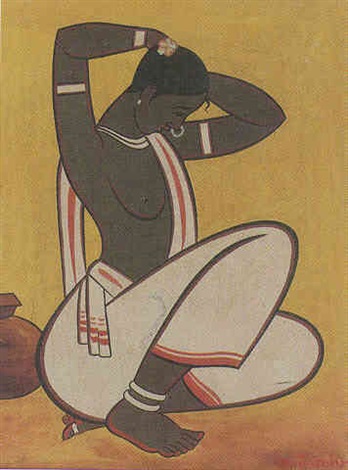
True liberation lies in discovering one’s true being, writes Nolini Kanta Gupta:
The first and foremost thing is to consider oneself as a human being, to get acquainted with one’s humanity. What comes first is the human being and not man or woman. If for the moment woman grows to some extent in the likeness of man in her attempt to awaken the full humanity of her soul, it need not be redressed. One who has room for right to error, has also the room for and right to truth.
If this holds true in all other fields then why not in the case of woman? Let woman liberate first her human being within, thereafter the time will come for her to understand and decide that she is woman. If she attains true humanity, then true womanhood will automatically develop and adorn her.
(pp. 28-29)
It may be argued by some that freedom as a value cannot be limited or restrictive – freedom must be absolute, and even the freedom to commit mistake along the path of one’s life eventually helps the individual grow. There is some truth to such an argument. But this is also an argument of the individualist, one who only looks at life from the point of view of an individual.
The Indian view is different. The Indian vision of life looks at both the individual and the society when it concerns itself with the human life and the human development.
EDUCATION FOR LIBERATION
The freedom of woman will start becoming a reality only when she achieves economic independence. Of course, there must first be inner independence, freedom of mind, freedom from traditional customs and habits, there must be the awakening of self, of personality within and in the heart of hearts.
For this what is needed is education and, even more than that, an initiation. But the thing within can take shape only with the support of a container without; the inner truth never matures, never finds an expression without having an outer base. Therefore, woman must have freedom of physical and vital sustenance if she wants to make effective her freedom of self and mind.
(Nolini Kanta Gupta, p. 43)
Economic independence is often the first step toward greater freedom and control over one’s life. An education that prepares the girls and women for securing financial independence is, therefore, considered essential in our times. Everyone today agrees that girls and women must have the same rights, access to and opportunities for education as boys and men. For decades now, our governments and civil society have been giving more and more push to girls’ education.
But unfortunately, we have not asked a key question – is the present form of education really good enough for our future generations – girls and boys? This is a critical question to ask if we believe education can be an important stepping stone for girls and women to develop and blossom in full freedom.
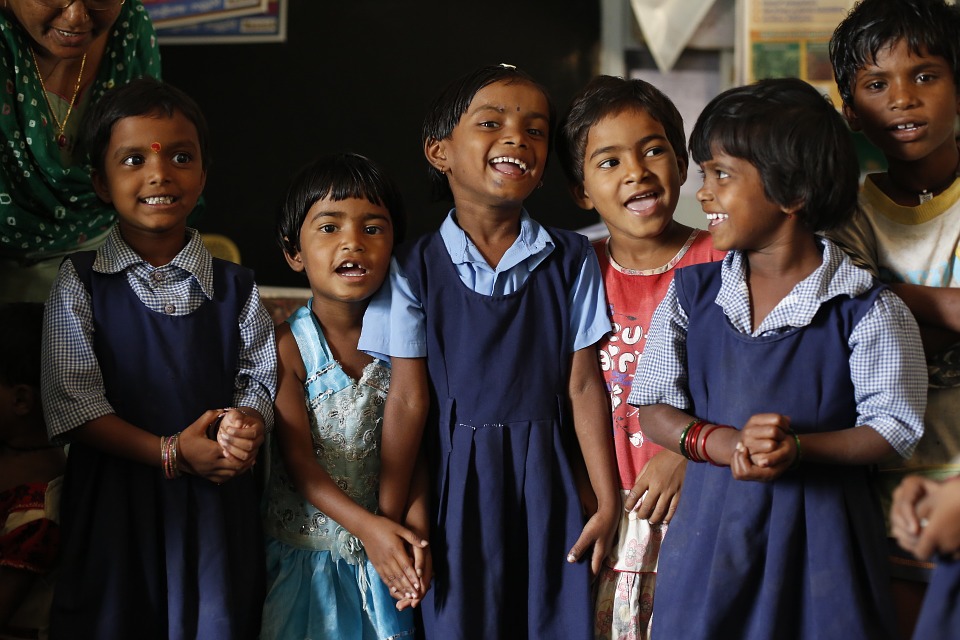
It is now well accepted among the scholars of India that women in ancient Indian society enjoyed much higher place of respect and reverence than what is generally seen today. Various historical, cultural, social factors led to a degeneration over time. In one paragraph, Sri Aurobindo summarised eloquently the overall status of women in the ancient Indian society:
The Indian ideal of the relation between man and woman has always been governed by the symbolism of the relation between the Purusha and Prakriti (in the Veda Nri and Gna), the male and female divine Principles in the universe. Even, there is to some degree a practical correlation between the position of the female sex and this idea.
(CWSA, Vol. 25, p. 8)
In the earlier Vedic times when the female principle stood on a sort of equality with the male in the symbolic cult, though with a certain predominance for the latter, woman was as much the mate as the adjunct of man; in later times when the Prakriti has become subject in idea to the Purusha, the woman also depends entirely on the man, exists only for him and has hardly even a separate spiritual existence.
In the Tantrik Shakta religion which puts the female principle highest, there is an attempt which could not get itself translated into social practice…, — to elevate woman and make her an object of profound respect and even of worship.
In the above passage, let us zoom in on these words: “when the Prakriti [Nature] has become subject in idea to the Purusha [soul, self], the woman also depends entirely on the man, exists only for him and has hardly even a separate spiritual existence.”
Howsoever appropriate this Indian view of woman as prakriti (nature) may be, in a deeper sense practically the term ‘nature’ itself betrays the fundamental deficiency that has become the nature of many women, even to this day. That deficiency is of self-consciousness, of selfhood and of personality. Denying this is only shying away from the uncomfortable truth.
For a long time, woman while being given the status of an equal partner of man was still kept subservient to him. Often this was done to keep the social stability in check. And the idea of dharma – stri dharma, patni dharma, putri dharma, dharma of a woman, of a wife, of a daughter – was often (mis-)used for this purpose.
When the illusion of a dharma, of an ideal, engulfs the soul, then it is not at all easy to be freed from it – there is no bondage as firm as that of dharma.
(Nolini Kanta Gupta, p. 69)
As a result, over time women gave up how to claim, how to even easily identify for themselves their state of being or their circumstances which continue to keep them subservient. They became quick to please, even erase their own inner calling as an individual in order to make another’s dharma their own.

We need an education that awakens in the young girls and women a sense of their selves, a sense of their individual personality. By personality we do not only mean an outer awareness of their rights as an individual, though that may be the first step.
True personality is however an inner feeling – “I am a special being, I have my own dharma and karma, my own mind and heart, my life as to be shaped in a distinct and well-organised way of its own, according to the truth, the inspiration of my soul – most often it is this feeling that is the basis of personality.
(ibid, p. 73).
Women and girls must be given the scope to awaken this curiosity or inquisitiveness about their own selves in their minds. That should be the purpose of education for women, in fact for everyone, regardless of the gender.
The old idea that a woman must remain dependent on her father or her husband or her son has now been discarded for the most part. But it has not been replaced with an awareness of the true nature of self-dependence and self-mastery.
Our education for the most part has emphasised preparation for social and economic success – for both men and women. While economic independence for women is often a first necessary step to becoming self-dependent, there is more to self-fulfilment than merely securing a good job and making good amount of money.
When human consciousness tries to raise itself from the vital to the mental level, only then does the feeling of personality awaken, the sense of selfhood. The play of Prakriti, the inferior life, is the expression of the life-force; the special dharma of the mind has not found there its true expression; it remains a part and parcel of life and moves along as one of the life-streams.
Then again, the field of life is the confluence of various streams of force which are universal and cosmic; there, no special feature appears in an individual but the group, class or collectivity. The force-stream of life is therefore fluid and mobile – it does not give form to anything special.The individual formulations like the inferior creatures which are embodiments of sheer life-force, seem to be only the frame to contain and express it for its play; there is no fulfilment of their own for those formations, at the end of the play of the life-force they simply break and fall off on their own.
It is the Purusha of the mind that gives a special form to life; the fluid formless force-streams of life get condensed into a separate centre – that is to say, stand out with a personal fulfilment or personality – subjected to the pressure of the special aim of this mental Purusha.
(ibid, pp. 73-74)
Women and girls must be given full opportunities to develop their mental capacities, their faculty of reasoning and critical thinking, which is the first step to developing a mental being, a sense of individual identity and personality. This helps awaken their souls, they will become strong and capable and brim with the greatness of self-identity.
Then it might not be easy to direct them or mould them at will; but only then will they be the vehicle of a more solid creation… in our country woman’s ‘progress’ would mean her rising and establishing herself on her mental being – ‘the awakening of woman’ is to recognize and know her nature and reality with this increasing self-consciousness, and to wake up to her personality.
(ibid, p. 75)
Let us recall what we read earlier: “Let woman liberate first her human being within, thereafter the time will come for her to understand and decide that she is woman.” Such liberation necessitates that one becomes conscious of oneself, gets established within and master life and work with one’s selfhood and characteristics.
This is the way to become fully human, fully oneself. We need an education that helps an individual to know oneself, allows the indwelling Divinity in each individual to blossom in full freedom.
It may be that education should precede freedom; but a greater truth is: freedom first, then education. A living education blossoms through freedom.
(ibid, p. 34)
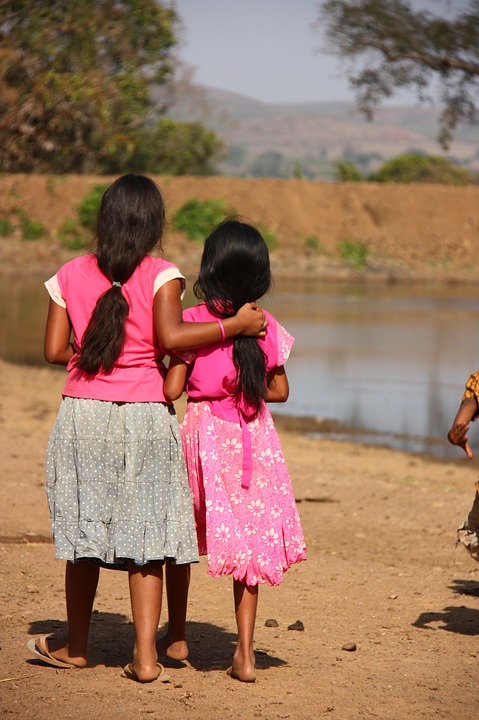
A good education should definitely help young women and men become equipped with the right kind of training and preparation for a profession or vocation of their choice.
But this has to be done in the larger framework of a much wider and deeper purpose of education. If we want young women and men to grow in a more holistic and all-rounded manner, education must help them explore the questions: what is a human being in her/his essence; what are the different parts of a human being that must be developed; how are these different parts interconnected; and what is the most essential or ultimate aim of human life.
Education must help prepare learners for a gradual inner evolution, which requires that all parts of their being – mental, emotional and physical – are properly prepared and developed to their fullest potential in order to manifest a harmonious and integral personality. In this light, education begins with the birth of the individual and continues throughout the life.
…until the manifestation of a new conception and consciousness compels Nature to create a new species which would no longer have to yield to the necessity of animal procreation and thus be under the obligation of dividing into two complementary sexes, the best that can be done for the progress of the present human race is to treat both sexes on a footing of perfect equality, to give them the same education and training and to teach them to find, through a constant contact with a Divine Reality that is above all sexual differentiation, the source of all possibilities and harmonies.
(The Mother, CWM, Vol. 12, p. 105)
Also read:
Sri Aurobindo’s Savitri and True Women Empowerment
Cover image: Three women, Artist – Jamini Roy

